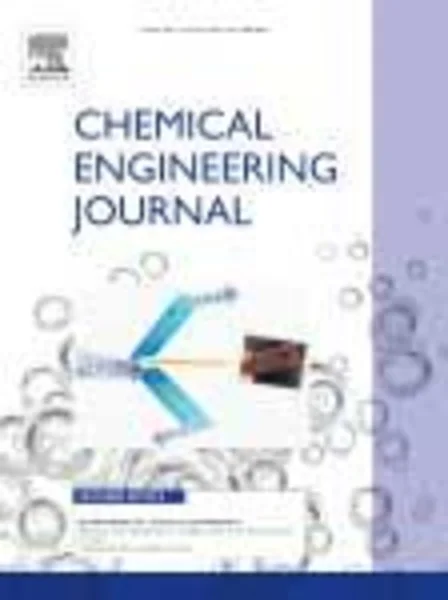-
are centralized mbrs coping with the current transition of large petrochemical areas? a pilot study in porto-marghera (venice)
جزئیات بیشتر مقاله- تاریخ ارائه: 1392/01/01
- تاریخ انتشار در تی پی بین: 1392/01/01
- تعداد بازدید: 639
- تعداد پرسش و پاسخ ها: 0
- شماره تماس دبیرخانه رویداد: -
the operation of a pilot scale membrane bioreactor (mbr) provided feedback for the world’s largest centralized mbr plant treating petrochemical wastewater, located in the industrial area of porto-marghera, venice. the main objective was to study the robustness of mbr technology under variable operating conditions of the petrochemical industry. we aimed to reduce the idle volumes of biological reactors and to enhance biomass activity. five runs were conducted, initially aiming to represent the operating conditions of the full scale mbr and then alternations were introduced, including the addition of more external carbon source, the reduction of the anoxic compartment volume, changes in configuration and an increase of influent load. ammonification was not effective in the pre-denitrification configurations, since the average organic nitrogen removal ranged from 29% to 60%. nitrification was very satisfactory since ammonium concentration was usually lower than 0.5 mg nh4–n l−1. increased acetic acid addition was effective, as it enhanced oxidation activity and denitrification rate. the reduction of the anoxic reactor volume and the abolition of internal recycling resulted in a decrease of denitrification rate. petrochemical wastewater composition affected the biological processes of ammonification and denitrification. the low denitrification during the nitrification, post-denitrification configuration was attributed to the low organic carbon to total nitrogen ratio of influent wastewater. the doubling of inflow rate did not significantly compromise permeate quality. the mbr demonstrated to safeguard the effluent quality even under sudden and drastic transient conditions. caustic soda caused inhibition of nitrifiers by 56% and refinery wastewater up to 60%.
مقالات جدیدترین رویدادها
-
استفاده از تحلیل اهمیت-عملکرد در ارائه الگوی مدیریت خلاقیت سازمانی و ارائه راهکار جهت بهبود
-
بررسی تاثیر ارزش وجوه نقد مازاد بر ساختار سرمایه شرکت های پذیرفته شده در بورس اوراق بهادار تهران
-
بررسی تأثیر سطح افشای ریسک بر قرارداد بدهی شرکت های پذیرفته شده در بورس اوراق بهادار تهران
-
بررسی تأثیر رتبه بندی اعتباری مبتنی بر مدل امتیاز بازار نوظهور بر نقد شوندگی سهام با تأکید بر خصوصی سازی شرکت ها
-
تأثیر آمیخته بازاریابی پوشاک ایرانی بر تصویر ذهنی مشتری پوشاک ایرانی (هاکوپیان)
-
نقش چشمه های آبگرم معدنی در رونق گردشگری با تاکید بر شهرستان مشکین شهر
-
مطالعه سیاست جنایی مشارکتی ایران در پیشگیری از قاچاق کالا و ارز
-
مطالعه تجربی تاثیرات نسبت های اختلاط و سن نمونه بر مشخصات مکانیکی بتن پلاستیک با استفاده از آزمایش سه محوری
-
مرتب سازی اسپایک های عصبی با استفاده از شبکه عصبی بدون استخراج ویژگی
-
بررسی گسترش خرافات و جادوگری در ایران با تاکید بر دوران صفویه و قاجاریه
مقالات جدیدترین ژورنال ها
-
مدیریت و بررسی افسردگی دانش آموزان دختر مقطع متوسطه دوم در دروان کرونا در شهرستان دزفول
-
مدیریت و بررسی خرد سیاسی در اندیشه ی فردوسی در ادب ایران
-
واکاوی و مدیریت توصیفی قلمدان(جاکلیدی)ضریح در موزه آستان قدس رضوی
-
بررسی تاثیر خلاقیت، دانش و انگیزه کارکنان بر پیشنهادات نوآورانه کارکنان ( مورد مطالعه: هتل های 3 و 4 ستاره استان کرمان)
-
بررسی تاثیر کیفیت سیستم های اطلاعاتی بر تصمیم گیری موفق در شرکتهای تولیدی استان اصفهان (مورد مطالعه: مدیران شرکتهای تولیدی استان اصفهان)
-
جرم شناسی جنوب
-
تنقیح مناط کتاب تاریخ تشیع در غرب اسلامی پس از شانزده سال، جامعه شناسی سیاسی دولت
-
تحلیل تفسیری مفهوم «صراط مستقیم» در سوره فاتحه با تمرکز بر تفسیر المیزان علامۀ طباطبایی رحمۀ الله علیه
-
environmental and economic analysis of selected pavement preservation treatments
-
preparation and characterization of tio2 fe2o3 nanocomposite by sol gel method




سوال خود را در مورد این مقاله مطرح نمایید :